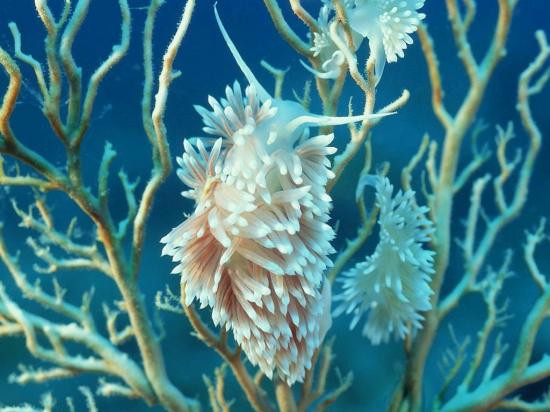英国研究人员正在从生活在海洋中的珊瑚身上寻找防晒秘密。也许在不远的将来,人们去海边度假时不再需要戴墨镜、抹防晒霜,只要提前吃上一片小小的药片,就一切搞定。

研究人员说,海洋中的常年受阳光照射,但不会被“晒伤”,估计与生活在其中的海藻有关。
珊瑚与藻类为共生关系。藻类通过光合作用为附着在珊瑚上的珊瑚虫提供食物,珊瑚虫的排泄物又给藻类提供能量。因为光合作用需要阳光,所以珊瑚与藻类只能在海洋中水浅的地方生存。
英国伦敦大学国王学院研究人员前往澳大利亚大堡礁,采集鹿角珊瑚样本研究。研究人员把珊瑚样本放在阳光下暴晒后发现,藻类释放的化合物的确可以帮助珊瑚防晒。
“这让我们相信,如果我们能确定这种化合物的成分,就能在实验室中复制出来,从而制作出能用于人类的防晒霜,”伦敦大学国王学院药学院资深讲师保罗•朗说。
朗说:“我们发现,藻类会释放一种化合物,传送给珊瑚虫,珊瑚虫把化合物‘改良’成为能同时帮助两者防晒的物质。”他说,这种天然防晒物质不仅对珊瑚和藻类有益,还能帮助以珊瑚虫为食的鱼躲避阳光威胁,“因此,它很显然能够通过食物链传播”。
研究人员说,能帮珊瑚防晒的化合物主要成分是氨基酸。他们正在实验室中尝试复制这种氨基酸,以期有朝一日能够用于人类。
“我们不能、也不会用珊瑚(做防晒霜),因为它是珍稀物种,”朗说,“一旦我们复制出这种化合物,就可以把它加入乳液,在皮肤上试用。”
他说:“我们已经接近成功。如果一切顺利,可能在两年内投入(临床)测试。”
当前,研究人员无法确定这种新型防晒霜的防晒效果究竟如何,“但是人们需要更好的防晒霜”。
朗说,这种以天然成分制作的防晒霜问世后,研究人员还将进一步努力,开发防晒药片。到那时,只需吞服一片药,几个星期都不怕日晒。“可以想象,服用药片后,你的皮肤和眼睛里都会出现这种化合物,”他说。
这样,人们可以放心大胆地享受日光浴,既不用担心被晒伤,也不用担心晒出皮肤癌。不过,若是服用了这种药片,人们可能无法晒出古铜色的肌肤。
他说,这种药或许能在五年内投入临床试验,十年内在市场销售。不过,在此之前,研究人员需要做大量毒性测试。
研究人员说,通过破解珊瑚防晒的秘密,他们还可以与农业专家合作,研究出能抗晒的小麦和土豆,帮助一些国家解决粮食问题。
生物探索推荐英文文章阅读:
Researchers at King’s College London have discovered how coral produces natural sunscreen compounds to protect itself from damaging UV rays, leading scientists to believe these compounds could form the basis of a new type of sunscreen for humans.
The team has begun to uncover the genetic and biochemical processes behind how these compounds are produced and eventually hope to recreate them synthetically in the laboratory for use in developing sun protection.
This month, as part of the three-year project funded by the Biotechnology and Biological Sciences Research Council (BBSRC), the King’s team collected coral samples for analysis from the Great Barrier Reef, a collaboration with Dr Walter Dunlap from the Australian Institute for Marine Science and Professor Malcolm Shick from the University of Maine USA.
Coral is an animal which has a unique symbiotic partnership with algae that lives inside it - the algae use photosynthesis to make food for the coral and the coral waste products are used by the algae for photosynthesis.
Because photosynthesis needs sunlight to work, corals must live in shallow water, which means they are vulnerable to sunburn.
Dr Paul Long, Senior Lecturer from the Institute of Pharmaceutical Science at King’s College London, who is leading the project, said: ‘We already knew that coral and some algae can protect themselves from the harsh UV rays in tropical climates by producing their own sunscreens but, until now, we didn’t know how.
‘What we have found is that the algae living within the coral makes a compound that we think is transported to the coral, which then modifies it into a sunscreen for the benefit of both the coral and the algae.
‘Not only does this protect them both from UV damage, but we have seen that fish that feed on the coral also benefit from this sunscreen protection, so it is clearly passed up the food chain.
‘This led us to believe that if we can determine how this compound is created and passed on, we could biosynthetically develop it in the laboratory to create a sunscreen for human use, perhaps in the form of a tablet, which would work in a similar way.
‘We are very close to being able to reproduce this compound in the lab, and if all goes well we would expect to test it within the next two years.’
A long-term goal of the King’s study is to look at whether these processes could also be used for developing sustainable agriculture in the Third World, as these natural sunscreen compounds found in coral could be used to produce UV-tolerant crop plants capable of withstanding harsh tropical UV light.
‘The part algae play in protecting itself and coral against UV is thought to be a biochemical pathway called the shikimate pathway, found only in microbes and plants. If we could take the part of the pathway that the coral generates, and put this into plants, we could potentially also utilise their shikimate pathway to make these natural sunscreens,’ said Dr Long.
‘If we do this in crop plants that have been bred in temperate climates for high yield, but that at present would not grow in the tropics because of high exposure to sunlight, this could be a way of providing a sustainable nutrient-rich food source, particularly in need for Third World economies,’ he concluded.
Not only has the study revealed the potential of the coral’s compound to protect both humans and crops from the sun, but Dr Long’s team is also looking for clues as to how climate change is leading to coral ‘bleaching’, which can lead to coral death.
Bleaching occurs when a rise in sea temperature (by 2-3 degrees more than the summer average) means the algae is lost from the coral tissues, and if the relationship between algae and coral is not re-established, the coral may die. In 1998, world-wide temperature anomalies resulted in a global bleaching event causing major coral mortality on 16 percent of the world’s coral reefs. As coral reefs provide a habitat for many forms of sea life, this can lead to significant loss.
Following the recent collection of samples from the Great Barrier Reef, the King’s team is looking at the genetic and biochemical changes that occur when coral is exposed to light at higher water temperatures. It is thought that this study will contribute vital knowledge for management and conservation of reef biodiversity in the context of global warming.







